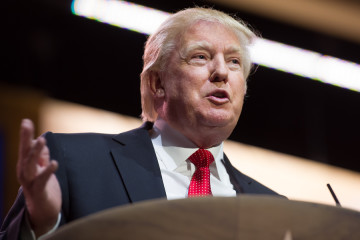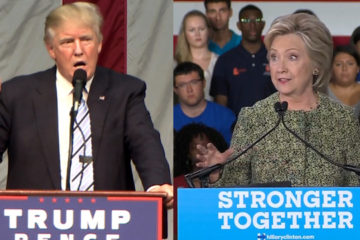Will 2016 Election Come Down to Electoral Map?: Albert R. Hunt

(Bloomberg View) —Any American political strategist or reporter — I’ve been one for more than four decades — loves the map: That’s the electoral map that decides the presidential election every four years.
Each of the 50 states is awarded electors based on its members of Congress, essentially by population; Washington, D.C., for example, gets three votes. In almost all states it’s a winner-take-all system; there are 538 votes nationally, it takes 270 to win.
QuickTake How the U.S. Elects Its Presidents
For about two thirds of the states, including the biggest, California and Texas, the outcome is a near-certainty. Thus the battle is over no more than 15 states with fewer than 200 electoral votes.
That’s what makes it fun, or serious, if you’re a campaign manager trying to figure out who will take Florida’s 29 votes or Ohio’s 18, North Carolina’s 15 or even Iowa’s 6.
Usually, the drama is exaggerated. The map follows the votes. Thus it only matters in a close contest, say within a two-point margin.
Over the past 14 elections, there have been four such contests: 1960, 1968, 1976 and 2000. The last one (Al Gore v. George W. Bush) was the only contest in more than a century in which the popular vote winner lost the Electoral College under circumstances that remain disputed.
Some Republicans still claim that John F. Kennedy won the presidency in 1960 –the nationwide popular vote margin was only 118,000 — because of vote fraud in Illinois. Yet if Kennedy had lost that state, he still would have won the electoral vote. So critics then throw in Texas, which had a razor tight election. But multiple election boards, some with Republican majorities, and judicial reviews have upheld the results.
The 1976 Jimmy Carter-Gerald Ford contest and especially the 1968 race, in which Richard Nixon defeated Hubert Humphrey by about 500,000 votes, were close, too, but the Electoral College outcome was clear. (Some Democrats point to 2004, when John Kerry would have won the electoral vote if he’d carried Ohio. True, but he lost the state by 118,000 votes.)
Academics and politicians continuously debate the merits of the Electoral College. Defenders say it enhances the role of smaller states and retail campaigning and can produce a more conclusive verdict. Critics say voters in most states are ignored and a popular vote is more consistent with democratic values.
Still, campaign strategists and reporters have to assume it will be close this year and thus emphasize the map in setting priorities and coverage.
“Two or three points gives you comfort,” says Jefrey Pollock, a Democratic pollster who works with the Hillary Clinton Super-PAC. “But you have to allocate resources where the electoral votes are.”
If the race, where Clinton currently holds about a five-point advantage, closes to within a point or two, it will still be an uphill climb for Donald Trump. The starting point is the 2012 election, when Barack Obama defeated Mitt Romney by four points in the popular vote and 332-206 in the Electoral College. To win this time, the Republican nominee would have to hold all the Romney states and pick up an additional 64 electoral votes.
Florida and Ohio are must-wins. Even in a close race, it appears that three states once considered competitive — Virginia, Colorado and Pennsylvania — may be beyond Trump’s reach.
That means the Republican would have to win three smaller states, Nevada, Iowa and New Hampshire, where some polls show a tight race. These states have a total of 16 electoral votes, which would produce a 269-269 tie that would send the election to the House, where chaos would reign.
More likely, the final margin will be beyond a couple points. Then we’ll have to put aside our map for four years.
This column does not necessarily reflect the opinion of the editorial board or Bloomberg LP and its owners.







No Comment